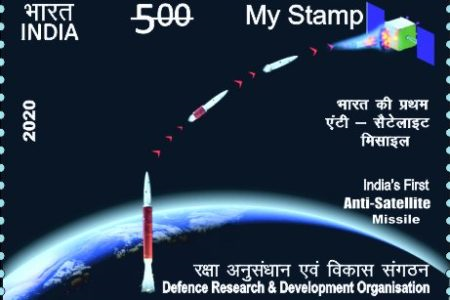Stamp on India’s First Anti Satellite Missile (A-SAT) | 16 Sep 2020
Why in News
A Customized My Stamp on India’s First Anti Satellite Missile (A-SAT) launch was released by the Department of Posts on the occasion of Engineers Day.
Engineers Day
- 15th September is observed as Engineer’s Day in India to mark the birth anniversary of Sir Mokshagundam Visvesvaraya (1861-1962), a civil engineer and statesman.
- He was a pioneer in his field, credited for inventing the Block System for dams – the automated doors shut during an overflow.
- He was appointed Chief Engineer of Mysore State in 1909, given the status of Diwan of Mysore in 1912, awarded the Bharat Ratna in 1955.
- His books, “Reconstructing India” and “Planned Economy of India” were published in 1920 and 1934, respectively.
Key Points
- My Stamp: It is the brand name for personalized sheets of Postage Stamps of India Post.
- ‘My Stamp’ was first introduced in India during the World Philatelic Exhibition, ‘INDIPEX-2011’.
- Customized My Stamp is a personalized sheet of Postage Stamps wherein the corporate, organizations and institutions can get their customized sheets printed from India Post.
- A-SAT Missile
- It is an interceptor missile that destroys or jams satellites in space.
- Two types of A-SATs: Kinetic and Non-Kinetic A-SATs.
- Kinetic A-SATs, like ballistic missiles physically strike an object in order to destroy it.
- Non-Kinetic A-SATs: A variety of nonphysical means can be used to disable or destroy a space object. These include frequency jamming, blinding lasers or cyberattacks.
Mission Shakti
- Defence Research and Development Organisation (DRDO) successfully conducted India’s first Anti-Satellite (A-SAT) missile test ‘Mission Shakti’.
- It was launched from Dr APJ Abdul Kalam Island in Odisha on 27th March 2019.
- The interceptor missile was a three-stage missile with two solid rocket boosters.
Significance:
- The entire effort was indigenous which demonstrated the Nation’s capability to develop such complex and critical missions.
- With this success, India became the fourth nation in the world to possess such capability.
- With the establishment of India as a space power, India will be accorded a place in any future international treaty that relates to the governance or usage of Space.
- In case of Pakistan, a terrestrial power, the use of nuclear arsenal can now come at a heavy cost.
- As of now Pakistan presumes that the no first use doctrine of India gives it an advantage, but with the development of ASAT capabilities, India would be able to destroy an incoming Pakistani nuclear missile.
- This will create a significant deterrence vis-a-vis the position of Pakistan.
- In case of China, which is a significant space power, counter-space capabilities of India will provide a critical balancing deterrent.

